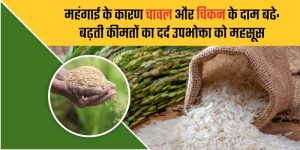In a bid to increase agricultural productivity and farmers’ income in Uttar Pradesh, the Yogi government has embarked on a data-driven approach to assess and enhance crop yields across the state. By utilizing satellite technology and establishing a centralized command centre, the state government is tracking and analysing the real-time status of farms, with the ultimate goal of enabling farmers to grow multiple crops per season, thereby increasing overall production.
KhetiGaadi always provides right tractor information
Cropping Intensity: The Key to Increased Yield
The cornerstone of the Yogi government’s initiative is the adoption of Cropping Intensity Technique, which focuses on increasing the number of crops grown on the same land within a year. This strategy is crucial for addressing food demands as India’s population continues to grow. To support this, a Command Centre has been set up, equipped with advanced satellite technology that accurately maps and tracks cultivable areas, crop sowing, and the yield potential of each farm.
This collected data helps assess cropping intensity by identifying the actual area sown in different seasons—Kharif, Rabi, and Zaid. The goal is to maximize productivity per unit of land by determining the feasibility of growing multiple crops in one agricultural year.
Tackling Marginal Productivity
According to the UP government, marginal productivity—where an increase in crop area no longer leads to significant yield growth—has been reached nationwide. Over the past seven decades, the Net Sown Area (NSA) has increased by only about 20%. In light of this limitation, the government is focusing on intensifying the cultivation of crops within the same area rather than expanding it.
By using the data gathered through this command centre, the state aims to break through the productivity plateau. With a more efficient use of land, farmers can grow a greater variety of crops per season, which will result in better yields and, ultimately, increased income.
If you wish to know organic methods to increase your overall cultivation yield, please call KhetiGaadi counsellor on 07875114466 or write an email to connect@khetigaadi.com
Discrepancies in Data: A Call for Accuracy
During a recent high-level meeting chaired by Chief Secretary Manoj Kumar Singh, discrepancies in sowing data from different departments were identified. For example, the Agriculture Department reported a sowing area of 169.37 lakh hectares, while satellite data from the Command Centre indicated that the total Common Crop Area for Kharif and Rabi crops was only 96.49 lakh hectares. When Zaid crops were included, the total increased to 177.41 lakh hectares. The difference in data highlights the need for accurate and consistent data collection, which is essential for proper planning and maximizing yield.
To address this issue, both the Agriculture and Horticulture departments have been asked to re-collect data on crops like mango, banana, and sugarcane. The government is working to ensure that data uniformity is maintained across all departments, so the cropping intensity strategy can be implemented effectively.
Current Cropping Intensity in UP: Ahead of the National Average
According to the latest figures, Uttar Pradesh’s cropping intensity stands at 177.10%, which is well above the national average of 155.40%. Cropping intensity refers to the number of crops grown per unit of land in a year, and a higher percentage indicates more efficient use of agricultural land.
In comparison to other states, Madhya Pradesh leads with a cropping intensity of 189.90%, followed by Punjab at 192.50% and Haryana at 181.80%. While UP is performing well, these figures indicate that there is still room for improvement, especially when compared to leading agricultural states.
Stay tuned with us on our WhatsApp channel for more real time updates on various agriculture related schemes and innovative cultivation methods aimed at supporting our hardworking farmers.
For more detailed information, visit https://khetigaadi.com/ regularly!
To know more about tractor price contact to our executive






